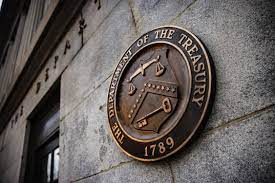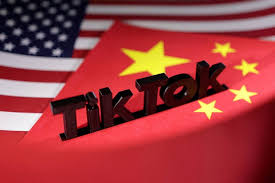U.S. financial technology firms responsible for popularizing amateur stock trading,are venturing into fixed income to capitalize on the increasing interest of ordinary investors, spurred by high returns in 2023.
Internet-based brokerage, Public platform for wealth management Wealthfront aims to make it simpler and cheaper for individual investors to get exposure to fixed-income instruments like Treasury bonds and corporate bonds. Firms releasing new products include Apex Fintech Solutions, a fintech software company.
Investor excitement for bonds, which have historically been viewed as a more somber aspect of the financial world, is not as high as it is for stocks, whose recent wild fluctuations have inspired a new wave of online traders, according to market participants.
Nevertheless, the move is another illustration of how the financial environment is shifting due to the Federal Reserve’s two-decade-high interest rates, which have also increased customer interest in fixed-income instruments. Historically, trading these items has been more costly and time-consuming for novice investors.
Fintechs believe they have a chance to revolutionize retail bond investment by introducing features like low-cost products, financial education tools, user-friendly apps, and fractionalized shares that the stock market has utilized to popularize stock trading. This is even though the Fed is considering rate cuts this year. Like many online brokerages, Public and Apex are also selling fractionalized bond products that are comparable to fractionalized stock shares.
“Anything you try to do in the area of bonds or fixed income feels and looks 25 years old. Chief Operating Officer of Public, Stephen Sikes stated, “I think we are starting to see the fintech world catch up. As an industry, we just haven’t invested in that.”
The broker-dealer, situated in New York, declared in December that it would start letting clients purchase $100 pieces of corporate and Treasury bonds. This year, municipal bonds will be added, and eventually, the minimum will be lowered to $10. According to investor flows, Sikes claimed that the Public’s Treasury account was the company’s most successful offering in 2023.
While ordinary investors can buy Treasury bills directly from the Treasury Department or a retail brokerage, the procedure is time-consuming and frequently necessitates a minimum commitment of $1,000 to $10,000.
Experts point out that while bond-focused ETFs are widely accessible, some investors might prefer to buy actual bonds to lock in rates and take advantage of tax breaks.
Retail investors will now be able to purchase fractions of corporate bonds and treasuries through a new product being released by Apex, a fintech company’s software provider. Apex stated that one of the clients experimenting with the new feature is the trading platform Webull.
“Do I believe that in terms of the velocity of individuals communicating, it will replace the equity side? No, I don’t. However, I do believe that this is a logical next step,” Apex CEO Bill Capuzzi stated.
THE ACTIVATOR
For the first time since July 2007, the yield on the benchmark 10-year Treasury note crossed 5% in October, making bonds more appealing than stocks.
Since then, yields have decreased as investors have gambled that the Fed will lower rates in 2024, but historically speaking, they are still high. A six-month Treasury, for instance, currently yields about 5.25%, which is significantly more than the government-backed securities that were available throughout the majority of the previous fifteen years.
Kevin McPartland, head of Coalition Greenwich’s market structure and technology research, stated, “This is probably the catalyst that the market needed to finally improve” bond products.
The amount of Treasury bills that were auctioned off by the US government between June 1 and November 30, 2023, was $319.75 billion, as opposed to $144.96 billion in 2022, according to Treasury data, which was purchased by individuals via the Treasury Department’s TreasuryDirect website.
“We’re pretty excited about fixed income,” David Fortunato, CEO of Wealthfront, stated. “It’s a huge hurdle to overcome to be able to invest in bonds in the recommended way using the tools that exist today.”
Automated portfolios, which tailor a combination of bond ETFs to each customer’s unique tax circumstances, were unveiled by Wealthfront last year.
Historically, bonds have undoubtedly been perceived by many as less interesting than stocks; yet, the objectives of equity and fixed-income investors may vary. The S&P 500 has returned approximately 412% in total since 2000. The Morningstar US Core Bond TR USD index, which measures US dollar-denominated securities with maturities longer than a year, has, in comparison, seen a total return of about 160% throughout that time.
According to Coalition Greenwich’s McPartland, “bonds still don’t move like stocks do, even though they are more interesting now than they were in 2021.”
Robert Siegel, a venture investor and lecturer at the Stanford Graduate School of Business, suggested that if interest rates drop and returns lose appeal, retail investors’ fondness for fixed income would also be put to the test.
Three rate cuts have been scheduled by the Feds for 2024, but investors are pricing in many more.
“As (fintech) platforms become more mainstream, they will need to adjust for various economic cycles to offer the product solutions that customers will want,” Siegel stated.


















